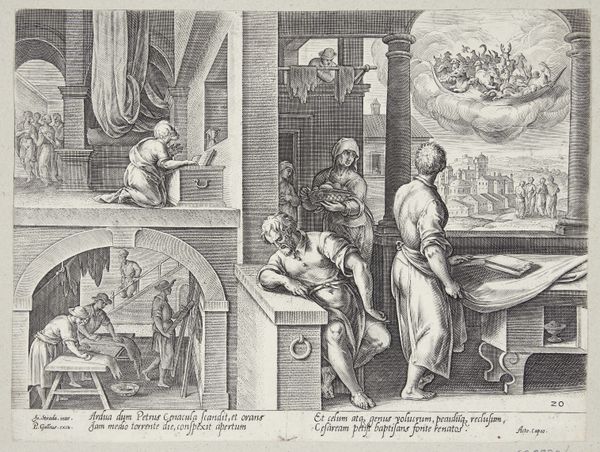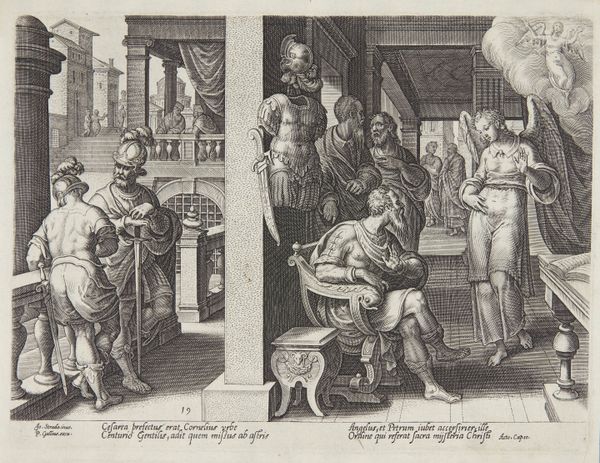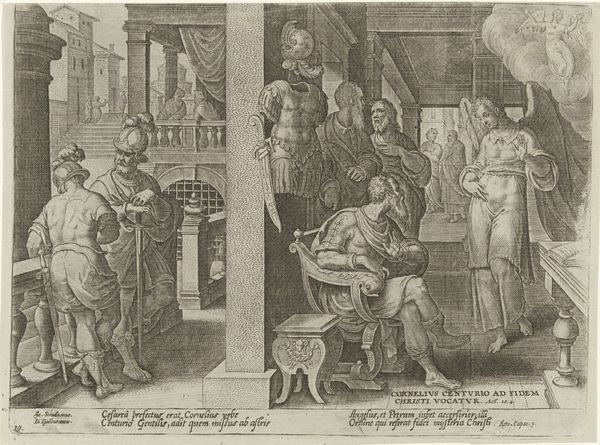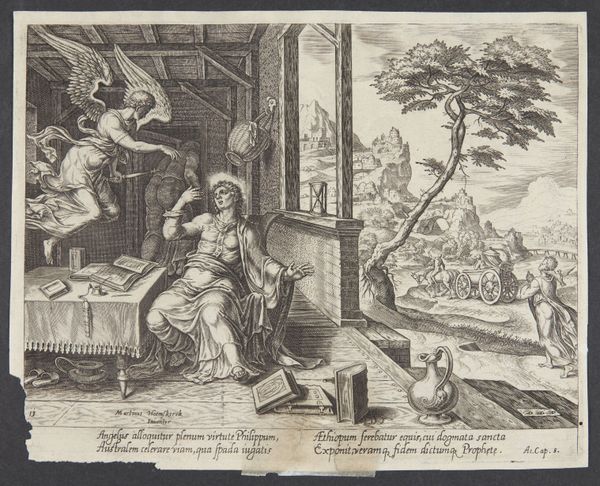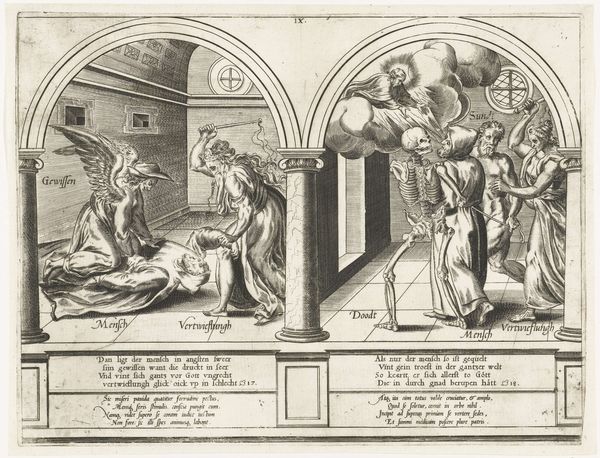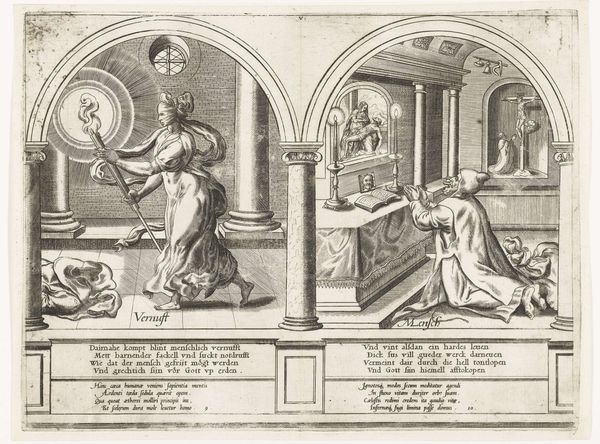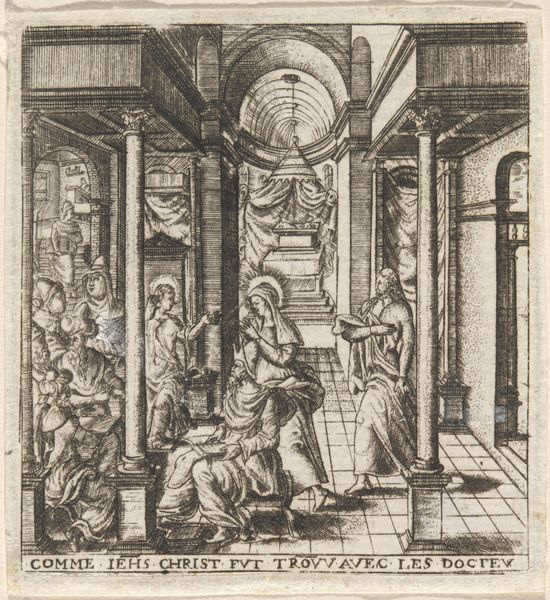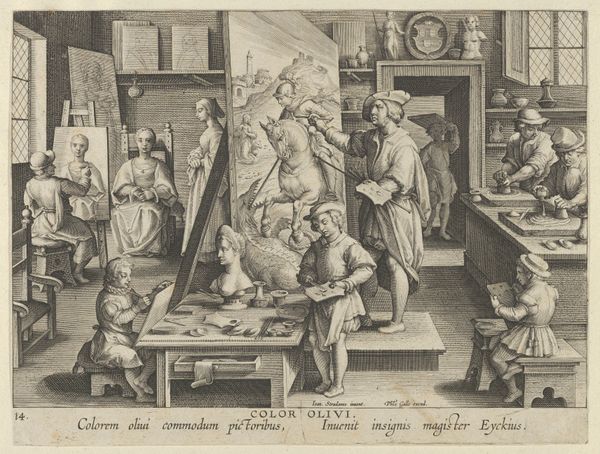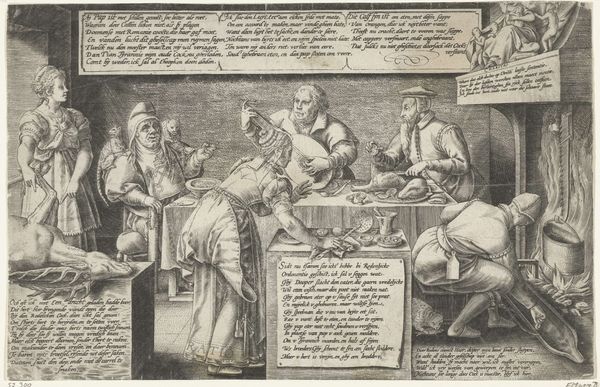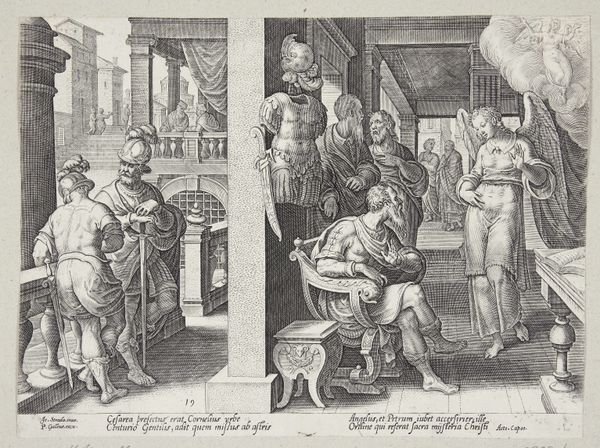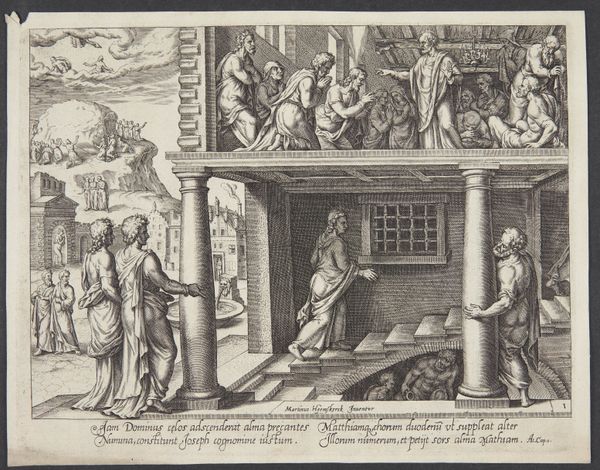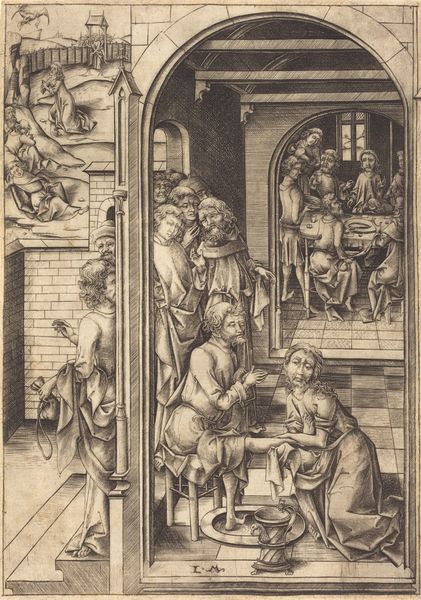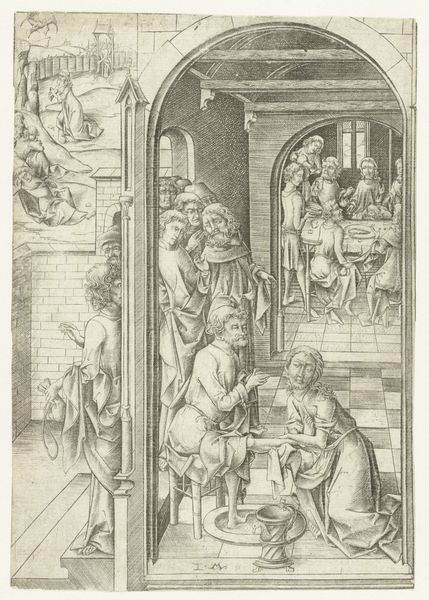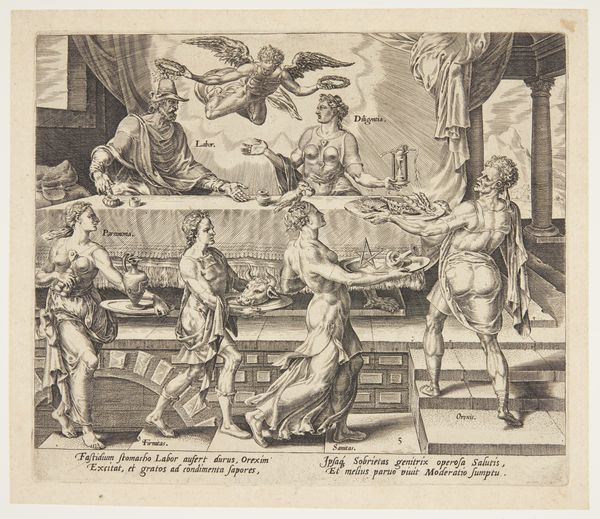
print, engraving
# print
#
mannerism
#
figuration
#
history-painting
#
engraving
Dimensions: 204 mm (height) x 267 mm (width) (plademaal)
Curator: Philips Galle created this engraving, titled "The Vision of St. Peter," in 1582. It's currently held at the Statens Museum for Kunst. My initial response to this print is intrigue. Editor: Intrigue, really? My immediate thought goes to the *labor* represented here. The almost frenetic activity crammed into each vignette is fascinating! The repetition of repetitive processes, all the textiles… Curator: True, there’s an intense sense of industriousness on display. And you’re right, the Mannerist style lends itself to a sense of busyness, of complex, even crowded compositions meant to display virtuosity. The vision, with Saint Peter staring dreamily out the window to an image with a floating mass of heavenly figures. It suggests spiritual revelation in everyday life. Editor: Everyday life, depicted through craft! See the scene below – people working in what appears to be a textile workshop. They're actively *making*, providing the material basis for the sacred narrative unfolding in the ethereal vision. Curator: But even that 'vision' you describe exists within a defined spatial relationship. It seems the figures almost literally emerge from St. Peter’s consciousness in his studio and surroundings, rather than appearing as separate or fully imagined events. It's carefully crafted to imply religious authority within the established workshop environment. Editor: You see established authority, and I see social fabric quite literally being manufactured. What’s intriguing is how the act of production itself, these repetitive motions in a workshop context, seemingly birth something "holy". Labor as a type of ritual. It forces me to think about the hands involved, their skill sets, all but the engraver's represented in an artistic print meant to show how religion needs a manufacturing basis, quite possibly. Curator: It is about how images can disseminate ideas – both religious and socioeconomic – within a growing print culture of the late 16th century. How these workshops helped to shape public perceptions of faith, patronage, and morality, all from the creation of relatively mass-producible prints, for the time. Editor: The commodification of spirituality via the means of printmaking, the very act of distribution allows it to gain value as it moves further from those making it! Curator: Exactly! I’m interested to see where further scholarship on the subject leads, it offers complex narratives concerning cultural status and artistic production. Editor: Agreed. Seeing the final material results with its source labor forces questions the power art history attributes to the artist!
Comments
No comments
Be the first to comment and join the conversation on the ultimate creative platform.
